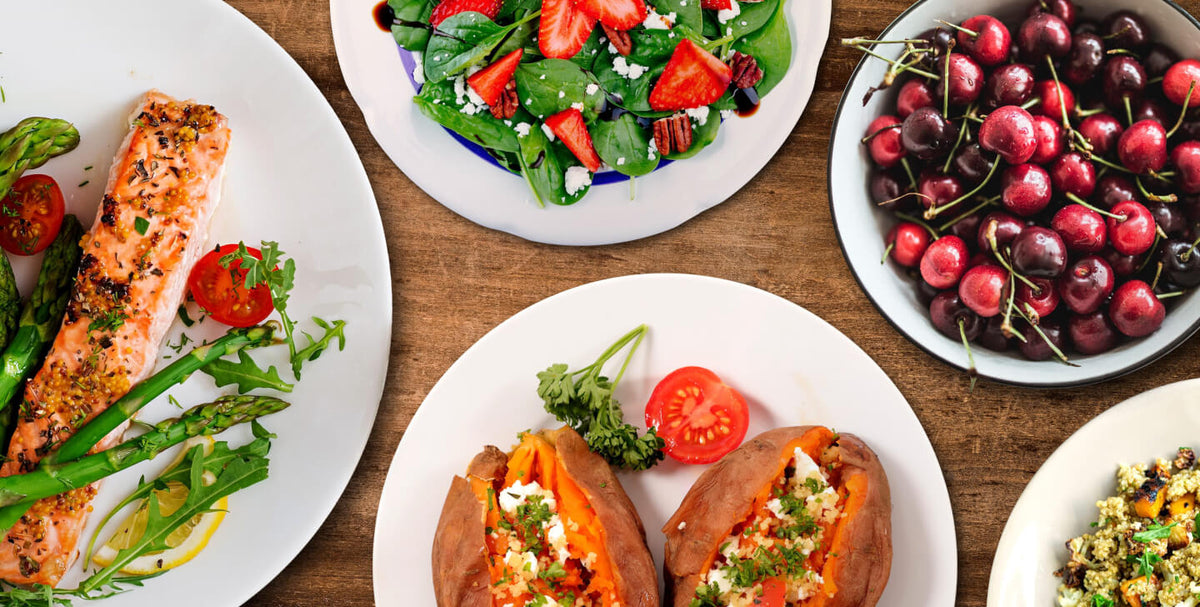5 Foods You Should Eat to Beat Inflammation

Eating foods that reduce inflammation rather than foods that raise it is equivalent to making food choices that will boost athletic performance as oppose to rob you of it. Let's first clarify what inflammation is in this context and why it's harmful to health, fitness and performance.
The word “inflammation” is a buzzword thrown around these days on the Internet almost as much as “superfoods” and “meal prep.” But what is it, really? In lay terms, inflammation is essentially your body’s response to an injury. From head to toe, that can mean a lot of things. Take a twisted ankle, for instance. You hop off the treadmill the wrong way after slaying a few sprints, and wham: puffiness and bruising. Under the skin’s surface, blood cells are swarming the area to remove damaged and dead cells to help your body heal. That right there is a prime example of inflammation.
Related: 4 Superfoods for Athletes: Are You Eating Them Incorrectly?
Chronic inflammation is when this inflammatory response lasts for an extended period of time, like weeks, months, or even years. When you have chronic inflammation, white blood cells flood a certain area and remain, even if there is no problem for them to solve. Indicators of chronic inflammation include frequent fevers, depression, stomach pain, and a heightened pain sensation.
“Chronic inflammation has been linked to everything from type 2 diabetes, allergies, autoimmune diseases like Crohn’s disease and rheumatoid arthritis, heart disease, cancer and stroke,” says Alissa Rumsey, MS, RD, CSCS, and founder of Alissa Rumsey Nutrition and Wellness. The good news? There’s one simple thing you can do to stave off long-term inflammation: watch what you eat. “Diet and lifestyle choices are closely linked to inflammation and there are many foods that can help to combat it within the body.”
Your meals planned for you. Download a free Spartan Meal Plan.
5 Foods that Reduce Inflammation
Here, Rumsey shares some of the best foods that reduce inflammation that you can build into your diet. Note: if you experience extensive symptoms of inflammation like those listed above, tweaking your diet is only part of the equation. Make sure to consult a physician, STAT.
1. Fatty fish
Just about any dietary advice in a discussion of foods that reduce inflammation start off with fish. Salmon, mackerel, tuna, and sardines are all good sources of omega-3 fatty acids. Omega-3 fats decrease the production of pro-inflammatory molecules in the body and stimulate the production of anti-inflammatory compounds called eicosanoids.
How to eat it: Add 8 ounces of cooked salmon for lunch or dinner alongside a steamed vegetable, like asparagus or broccoli.
2. Green leafy vegetables
Vegetables are also widely known as foods that reduce inflammation. Both fruits and vegetables present lots of antioxidants that help keep damaging molecules called free radicals at bay, and that translates to less inflammation. Plus, leafy veggies in particular are full of vitamin E, especially dark leafy greens like kale, spinach, collards, and broccoli. This is important because vitamin E plays a role in protecting the body from pro-inflammatory molecules called cytokines.
How to eat it: Salads are a super easy way to get in a hearty dose of leafy greens. Use kale or arugula as your base, and top with seasonal favorites like butternut squash and dried cranberries.
Related: Five Ways to Eat More Vegetables
3. Sweet potatoes
These are high in vitamins C and E as well as carotenoids, which are nutrients linked to lower levels of inflammation in the body. Purple sweet potatoes, grown in Hawaii, have even been found to inhibit the growth of cancer cell lines.
How to eat it: Mashed sweet potatoes, which can be made simply by boiling them in a pot of water for 30 minutes, then removing the skin and mashing, are a great alternative to pasta or rice as a base for protein classics like meatballs, chicken, and meatloaf.
4. Whole grains
Whole grains are an excellent source of fiber, and a high-fiber diet is associated with lower levels of inflammatory biomarkers in the body. Several studies have found that people who eat diets high in fiber have lower C-reactive protein (CRP) levels in their blood. CRP is a marker of inflammation commonly linked to diseases like heart disease and diabetes.
How to eat it: Quinoa, barley, oats, and buckwheat are all great examples of whole grains. Try getting the most bang for your buck with a quinoa and oats–based oatmeal in the morning. Simply bring ½ cup quinoa, 1 cup oats, and 3 cups water to a boil. Then, lower the temperature, turn down the heat, and cover the pot while it simmers for about 20 minutes. Top with your favorite fruit or cinnamon and honey.
Related: Why Eating Whole Grains Can Make You Feel Better Mentally and Physically
5. Berries and tart cherries
While all fruits can lower inflammation, berries especially have been shown to have anti-inflammatory properties due to the high levels of anthocyanin, a powerful phytonutrient. Research from the Oregon Health & Science University suggests that tart cherries have the highest anti-inflammatory content of any food. In their study, women aged 40 to 70 with inflammatory osteoarthritis had a significant reduction in important inflammation markers when they drank tart cherry juice twice daily—and the women with the highest inflammation levels at the beginning of the trial benefited the most.
How to eat it: Juice is the word, here. Make sure to stay away from varieties with unnatural added sweeteners.




